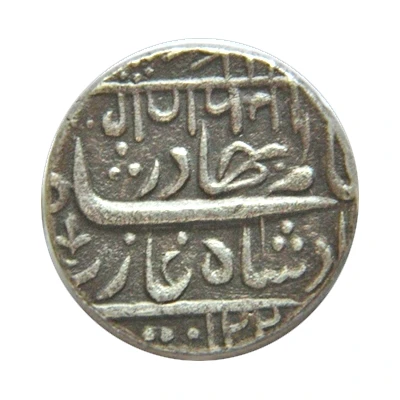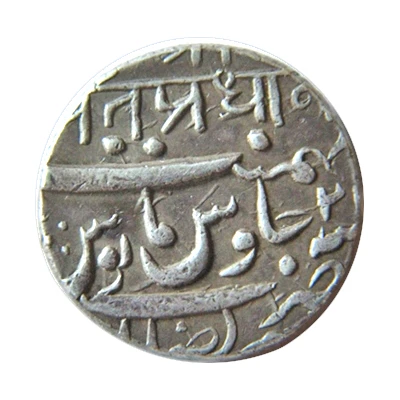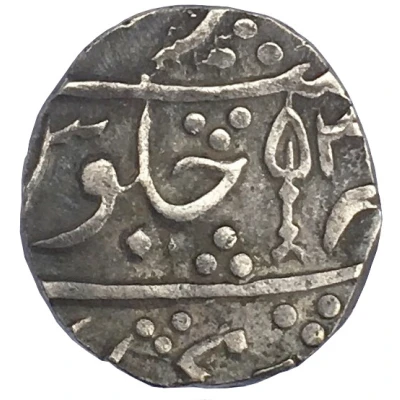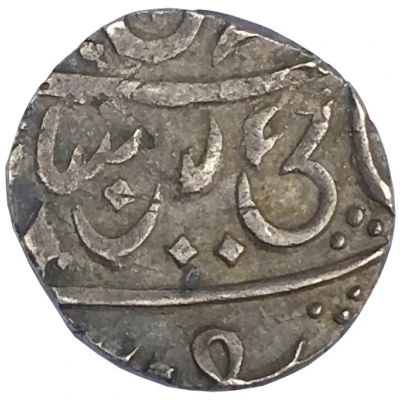


© Noël2
Rupee - Shah Alam II Miraj ND
1792 year| Silver | 11.3 g | 21 mm |
| Issuer | Maratha Empire (Indian states) |
|---|---|
| Type | Standard circulation coin |
| Year | 1792 |
| Value | 1 Rupee |
| Currency | Rupee (1674-1818) |
| Composition | Silver |
| Weight | 11.3 g |
| Diameter | 21 mm |
| Shape | Round |
| Orientation | Coin alignment ↑↓ |
| Demonetized | Yes |
| Updated | 2024-10-05 |
| Numista | N#71141 |
|---|---|
| Rarity index | 100% |
Reverse
Devnagari letters with persian inscription
Mint name 'Murtazabad' partially seen on the bottom
Lettering: पंतप्रधान
Translation: Prime minister
Edge
Plain
Comment
The 'Ganapati-Pantapradhan' rupees were struck by the Patwardhan family of Miraj who were ardent worshippers of Ganesha and keen supporters of the Peshwa or Pantapradhan in Marathi. The RY 27 most probably is reckoned from the handover of Miraj to the Patwardhans. This would mean the coins are struck around 1792, when Chintaman Rao Patwardhan was the ruler of Miraj and his uncle Gangadhar Rao was the regent.Interesting fact
One interesting fact about the Shah Alam II (Miraj) Rupee coin from the Maratha Empire is that it features a unique blend of Islamic and Hindu architectural elements on its reverse side. The coin's design includes a depiction of the Taj Mahal, which is a famous Islamic monument in India, alongside an image of a Hindu temple. This blending of cultural influences reflects the diverse religious and artistic traditions of the Maratha Empire during the 18th century.


![1 Rupee Gulshanabad [Nasik] front](/storage/images/1-Rupee-Gulshanabad-Nasik_82461_1.webp)
![1 Rupee Gulshanabad [Nasik] back](/storage/images/1-Rupee-Gulshanabad-Nasik_82461_2.webp)